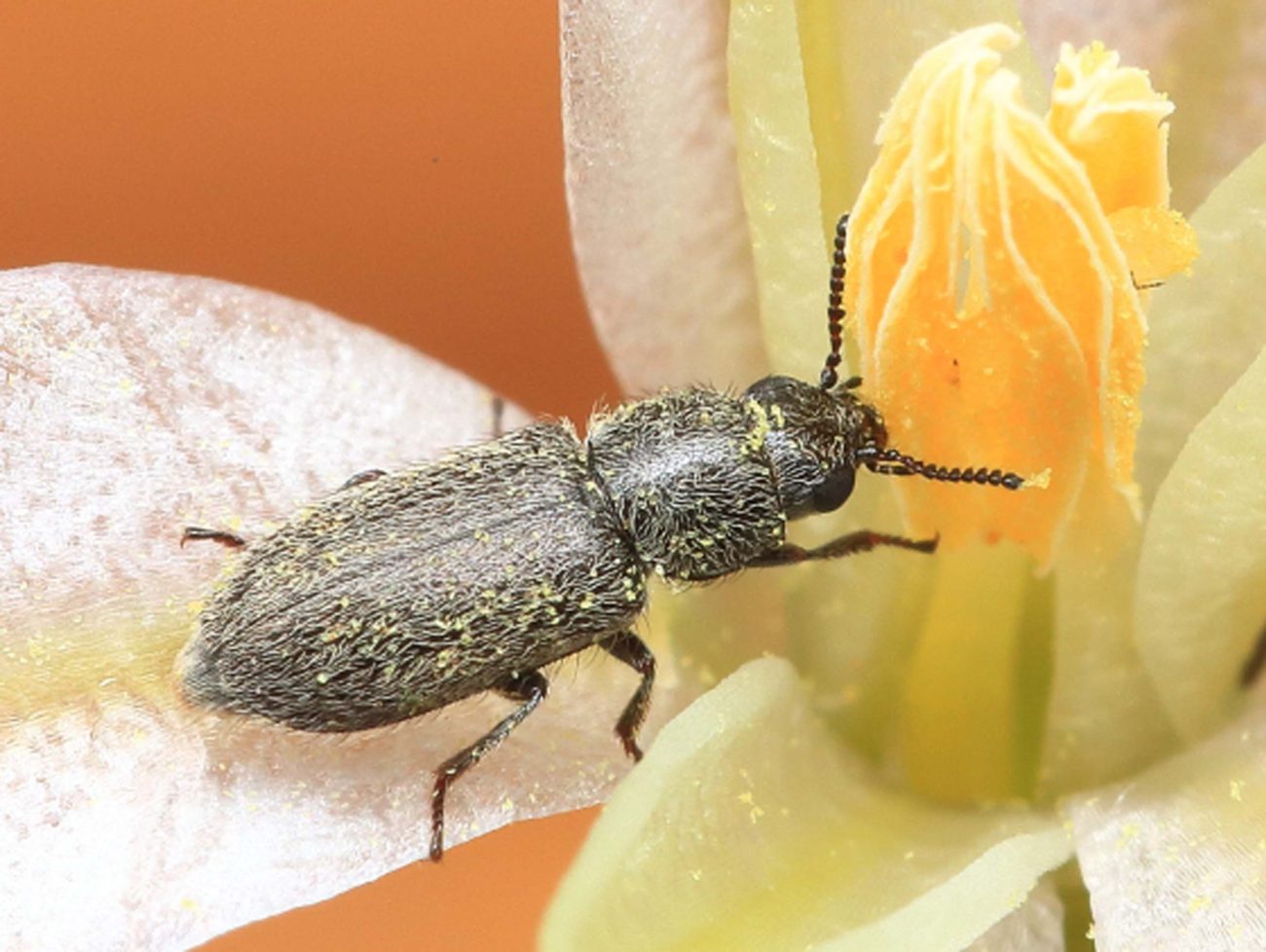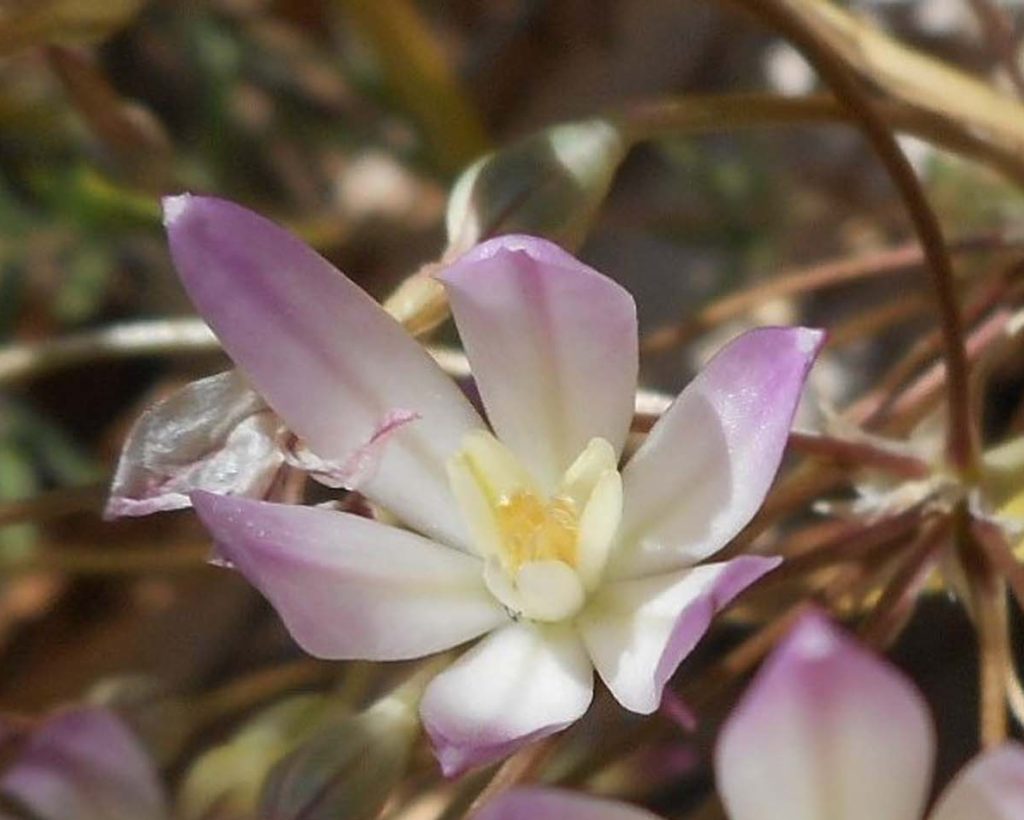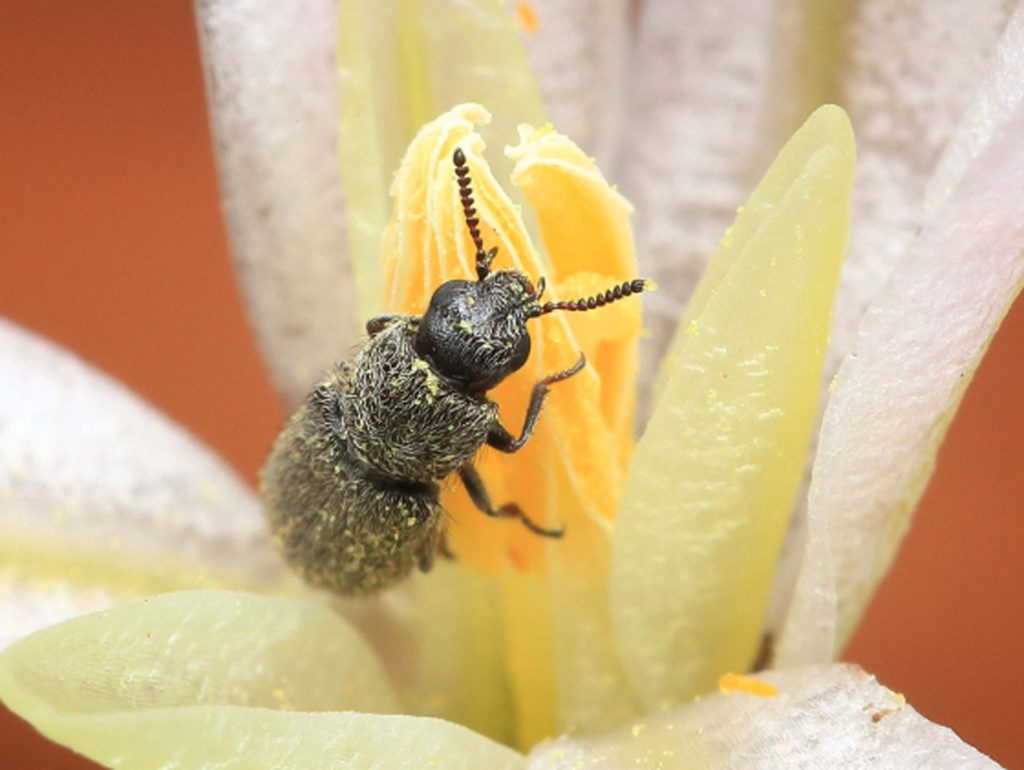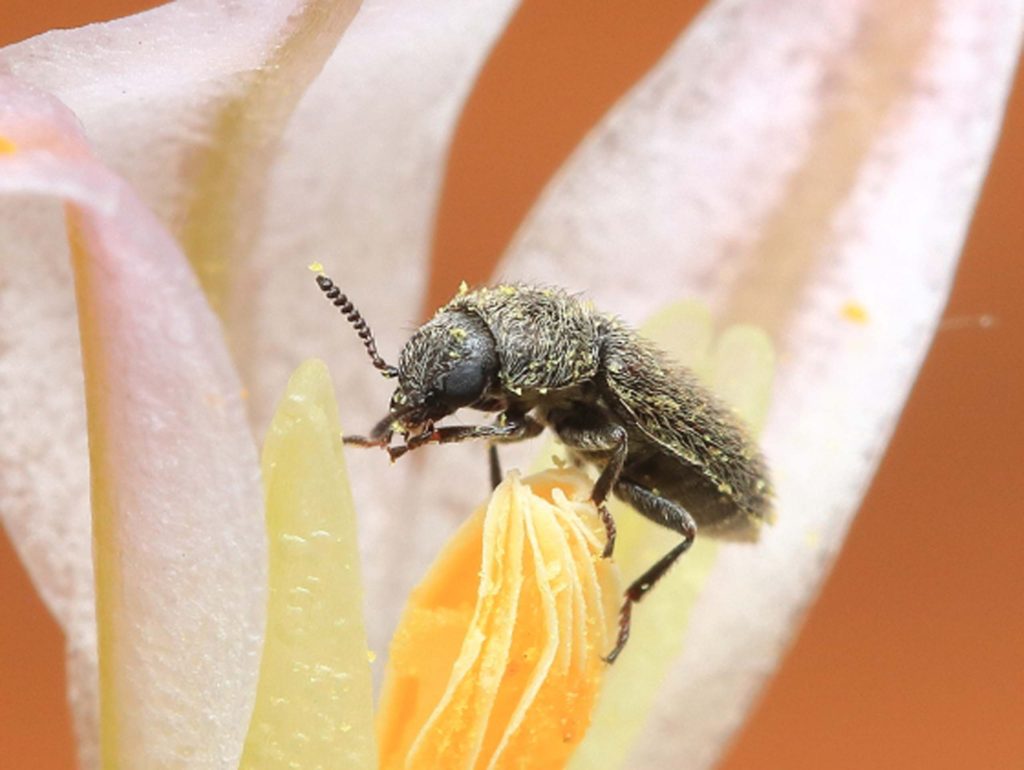
Sulphur Creek brodiaea (Brodiaea matsonii) is a very rare plant that only grows in one place in the world—right here the upper reaches of Sulphur Creek in Redding. It was discovered by Gary Matson in 2005 and officially named in 2010 by Robert Preston, a Brodiaea specialist who determined that it was a new species.

David Ledger is working on a petition requesting that the California Fish and Game Commission list the Sulphur Creek brodiaea as an endangered species. A part of that effort is to determine the pollinator of the plant. This beetle (pictured) is the most commonly found insect on the plant. It was collected along with a couple flowers and given to local entomologist Don Owen (who is also a member of Shasta Environmental Alliance’s Tree Committee) to identify.

With a little help from BugGuide, it was determined to be in the family Melyridae (the soft-winged flower beetles), subfamily Dasytinae, and genus Trichochrous. As there are about 1.5 million identified beetles in the world, it is difficult to key them to a specific species. From BugGuide: This is one of the many species of Trichochrous. Many species are common in spring and early summer, often aggregating on flowers in large numbers.

The beetle is eating pollen off of the yellow anther, the male part of the flower. Pollen grains are very high in protein and thus a desirable food for the beetle. The yellow spots on the body of the beetle are pollen grains and, if any should rub off on the stigma (the female flower part) as the beetle crawls over the flower, pollination would take place.
-David Ledger, Conservation Chair
